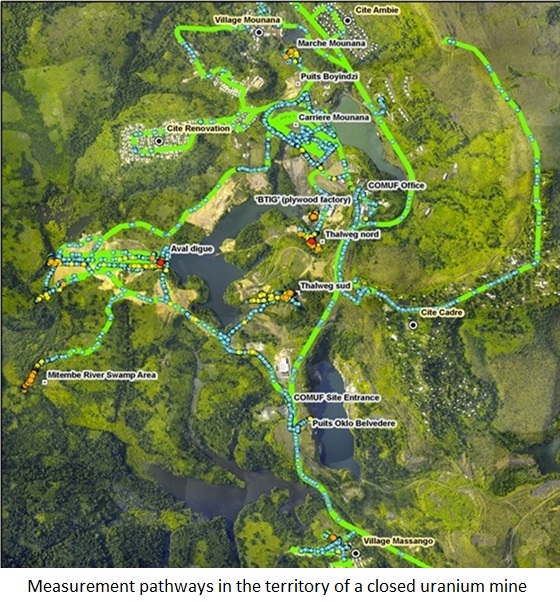7.4 Specifics of survey plans
The measurements shall be made as to gather as much information as possible to support making a judgement on the studied environmental case.
For establishing a reference radioactive background baseline for areas where a new facility will be built, large areas can be measured using instruments mounted on vehicles, and specific samples from the biota and water resources can be submitted for better sensitivity and accuracy laboratory analysis.
When the measurements are intended to verify potential releases from active facilities (monitoring) the main routes used for transportation of radioactive products, the direction of the winds and flow of water streams must be used to determine the main areas to be surveyed.
If no prior information is available for a given site with suspected contamination, the maximum amount of measurements must be made, as to cover all of its extension and environmental compartments in the hunt of “hot spots”. Large territories might be surveyed by performing dose rate measurements from vehicles (see example shown in the figure), and in the event of finding some anomalous values ('hot spots') more detailed surveys can be made by walking through the premises. As a rule, dose rate measurements are preferred, as to have an idea of the exposure hazard for people accessing these area.
In the cases of remediated objects, the measurement survey ideally shall cover all of the areas remediated and the locations were the radioactive material has been disposed.

In environmental assessment or monitoring large territories might be verified by performing dose rate measurements over large areas. Depending on the extension of the areas, the measurements can be made from airborne platforms, terrestrial vehicles or by walking. Large areas are usually surveyed from vehicles (see example shown in the figure) or from airborne platforms (in cases of high activity contamination), and in the event of finding some anomalous values('hot spots') more detailed surveys can be made by walking through the premises. Depending on the specifics of the survey and available instrumentation a combined use of different measurement platforms is advisable.
As a rule, dose rate measurements are preferred, as to have an idea of the exposure hazard for people accessing these areas.